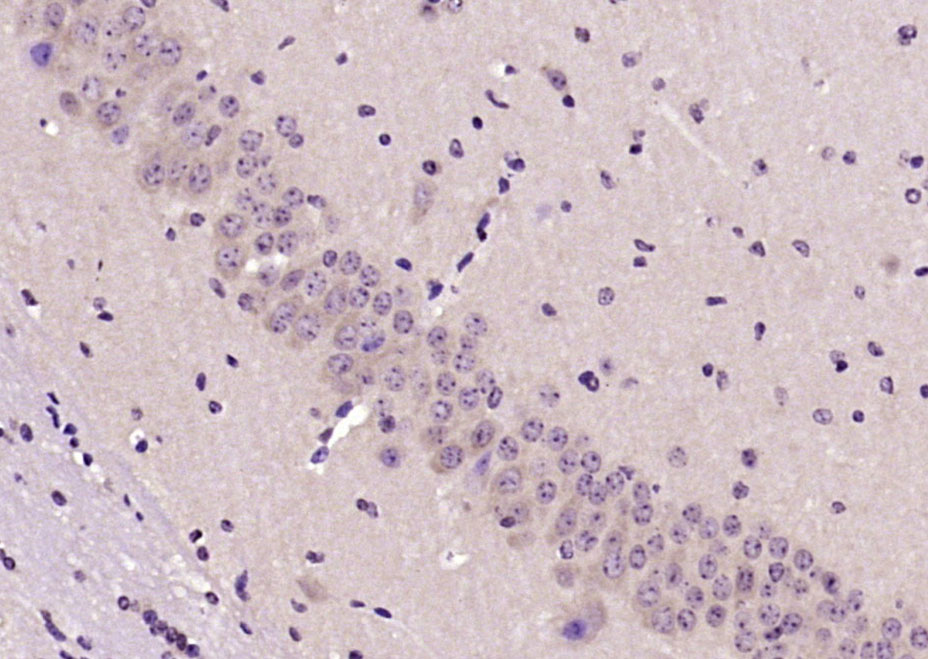
Rabbit Anti-LPA1 antibody
EDG 2; Endothelial Cell Differentiation Gene-2; Endothelial differentiation gene 2; Endothelial Differentiation Lysophosphatidic Acid G Protein Coupled Receptor 2; G10 protein homolog; GPCR 26; GPCR26; Gpcr91; Kdt2; LPA 1; LPA receptor 1; LPA receptor EDG
View History [Clear]
Details
Product Name LPA1 Chinese Name 溶血磷脂酸受体蛋白1/EDG2抗体 Alias EDG 2; Endothelial Cell Differentiation Gene-2; Endothelial differentiation gene 2; Endothelial Differentiation Lysophosphatidic Acid G Protein Coupled Receptor 2; G10 protein homolog; GPCR 26; GPCR26; Gpcr91; Kdt2; LPA 1; LPA receptor 1; LPA receptor EDG2; LPA1; LPAR1; Lysophosphatidic acid receptor 1; Lysophosphatidic acid receptor EDG2; MGC105279; MGC29102; LPAR1_HUMAN. Research Area Tumour immunology Signal transduction G protein-coupled receptor Immunogen Species Rabbit Clonality Polyclonal React Species Human, Mouse, (predicted: Rat, Dog, Pig, Cow, Rabbit, Sheep, ) Applications IHC-P=1:100-500 (Paraffin sections need antigen repair)
not yet tested in other applications.
optimal dilutions/concentrations should be determined by the end user.Theoretical molecular weight 41kDa Cellular localization cytoplasmic The cell membrane Form Liquid Concentration 1mg/ml immunogen KLH conjugated synthetic peptide derived from human LPA1: 1-50/364 <Extracellular> Lsotype IgG Purification affinity purified by Protein A Buffer Solution 0.01M TBS(pH7.4) with 1% BSA, 0.03% Proclin300 and 50% Glycerol. Storage Shipped at 4℃. Store at -20 °C for one year. Avoid repeated freeze/thaw cycles. Attention This product as supplied is intended for research use only, not for use in human, therapeutic or diagnostic applications. PubMed PubMed Product Detail EDG2 belongs to a family of G-protein coupled receptors whose ligands are lysophospholipids. There are eight known members of the EDG receptor family and they are implicated in mediating growth-related effects such as induction of cellular proliferation, alterations in differentiation and survival, and suppression of apoptosis. They also evoke cellular effector functions that are dependent on cytoskeletal responses such as contraction, secretion, adhesion and chemotaxis. EDG receptors are developmentally regulated and differ in tissue distribution. They couple to multiple types of G proteins to signal through ras and MAP kinase, rho, phospholipase C, and several proteins not used within 12 hours. Edg2 has been reported in most human tissues, and is especially abundant in brain cortical regions. ESTs have been isolated from bone, brain, breast, connective tissue, embryo, heart/melanocyte/uterus, lung, prostate and uterus libraries.
Function:
Receptor for lysophosphatidic acid (LPA), a mediator of diverse cellular activities. Seems to be coupled to the G(i)/G(o), G(12)/G(13), and G(q) families of heteromeric G proteins. Stimulates phospholipase C (PLC) activity in a manner that is dependent on RALA activation.
Subunit:
Interacts with RALA and ADRBK1.
Subcellular Location:
Cell surface. Cell membrane; Multi-pass membrane protein. Note=Prior to LPA treatment found predominantly at the cell surface but in the presence of LPA co-localizes with RALA in the endocytic vesicles.
Tissue Specificity:
Expressed in many adult organs, including brain, heart, colon, small intestine, placenta, prostate, ovary, pancreas, testes, spleen, skeletal muscle, and kidney. Little or no expression in liver, lung, thymus, or peripheral blood leukocytes.
Similarity:
Belongs to the G-protein coupled receptor 1 family.
SWISS:
Q92633
Gene ID:
1902
Database links:
Entrez Gene: 1902 Human
Entrez Gene: 14745 Mouse
Omim: 602282 Human
SwissProt: Q92633 Human
SwissProt: P61793 Mouse
SwissProt: P46628 Sheep
Unigene: 126667 Human
Unigene: 4772 Mouse
Unigene: 11200 Rat
Product Picture
References (0)
No References
Bought notes(bought amounts latest0)
No one bought this product
User Comment(Total0User Comment Num)
- No comment




 +86 571 56623320
+86 571 56623320
 +86 18668110335
+86 18668110335

